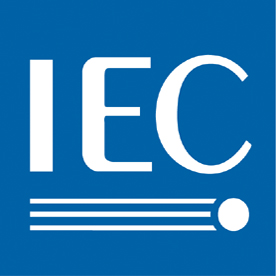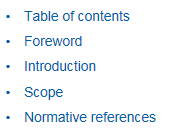ISO/IEC 9594-2:2020
Information technology - Open systems interconnection - Part 2: The Directory: Models
Abstract
This document provides a conceptual and terminological framework for the other ITU-T X.500-series Recommendations | parts of ISO/IEC 9594 which define various aspects of the Directory.
The functional and administrative authority models define ways in which the Directory can be distributed, both functionally and administratively. Generic Directory System Agent (DSA) and DSA information models and an Operational Framework are also provided to support Directory distribution.
The generic Directory Information Models describe the logical structure of the Directory Information Base (DIB) from the perspective of Directory and Administrative Users. In these models, the fact that the Directory is distributed, rather than centralized, is not visible.
This Recommendation | International Standard provides a specialization of the generic Directory Information Models to support Directory Schema administration.
The other ITU-T Recommendations in the X.500 series | parts of ISO/IEC 9594 make use of the concepts defined in this Recommendation | International Standard to define specializations of the generic information and DSA models to provide specific information, DSA and operational models supporting particular directory capabilities (e.g., Replication):
a) the service provided by the Directory is described (in Rec. ITU-T X.511 | ISO/IEC 9594-3) in terms of the concepts of the information framework: this allows the service provided to be somewhat independent of the physical distribution of the DIB;
b) the distributed operation of the Directory is specified (in Rec. ITU-T X.518 | ISO/IEC 9594-4) so as to provide that service, and therefore maintain that logical information structure, given that the DIB is in fact highly distributed;
c) replication capabilities offered by the component parts of the Directory to improve overall Directory performance are specified (in Rec. ITU-T X.525 | ISO/IEC 9594-9).
The security model establishes a framework for the specification of access control mechanisms. It provides a mechanism for identifying the access control scheme in effect in a particular portion of the Directory Information Tree (DIT), and it defines three flexible, specific access control schemes which are suitable for a wide variety of applications and styles of use. The security model also provides a framework for protecting the confidentiality and integrity of directory operations using mechanisms such as encryption and digital signatures. This makes use of the framework for authentication defined in Rec. ITU-T X.509 | ISO/IEC 9594-8 as well as generic upper layers security tools defined in Rec. ITU-T X.830 | ISO/IEC 11586-1.
DSA models establish a framework for the specification of the operation of the components of the Directory. Specifically:
a) the Directory functional model describes how the Directory is manifested as a set of one or more components, each being a DSA;
b) the Directory distribution model describes the principals according to which the DIB entries and entry‑copies may be distributed among DSAs;
c) the DSA information model describes the structure of the Directory user and operational information held in a DSA;
d) the DSA operational framework describes the means by which the definition of specific forms of cooperation between DSAs to achieve particular objectives (e.g., shadowing) is structured.
The functional and administrative authority models define ways in which the Directory can be distributed, both functionally and administratively. Generic Directory System Agent (DSA) and DSA information models and an Operational Framework are also provided to support Directory distribution.
The generic Directory Information Models describe the logical structure of the Directory Information Base (DIB) from the perspective of Directory and Administrative Users. In these models, the fact that the Directory is distributed, rather than centralized, is not visible.
This Recommendation | International Standard provides a specialization of the generic Directory Information Models to support Directory Schema administration.
The other ITU-T Recommendations in the X.500 series | parts of ISO/IEC 9594 make use of the concepts defined in this Recommendation | International Standard to define specializations of the generic information and DSA models to provide specific information, DSA and operational models supporting particular directory capabilities (e.g., Replication):
a) the service provided by the Directory is described (in Rec. ITU-T X.511 | ISO/IEC 9594-3) in terms of the concepts of the information framework: this allows the service provided to be somewhat independent of the physical distribution of the DIB;
b) the distributed operation of the Directory is specified (in Rec. ITU-T X.518 | ISO/IEC 9594-4) so as to provide that service, and therefore maintain that logical information structure, given that the DIB is in fact highly distributed;
c) replication capabilities offered by the component parts of the Directory to improve overall Directory performance are specified (in Rec. ITU-T X.525 | ISO/IEC 9594-9).
The security model establishes a framework for the specification of access control mechanisms. It provides a mechanism for identifying the access control scheme in effect in a particular portion of the Directory Information Tree (DIT), and it defines three flexible, specific access control schemes which are suitable for a wide variety of applications and styles of use. The security model also provides a framework for protecting the confidentiality and integrity of directory operations using mechanisms such as encryption and digital signatures. This makes use of the framework for authentication defined in Rec. ITU-T X.509 | ISO/IEC 9594-8 as well as generic upper layers security tools defined in Rec. ITU-T X.830 | ISO/IEC 11586-1.
DSA models establish a framework for the specification of the operation of the components of the Directory. Specifically:
a) the Directory functional model describes how the Directory is manifested as a set of one or more components, each being a DSA;
b) the Directory distribution model describes the principals according to which the DIB entries and entry‑copies may be distributed among DSAs;
c) the DSA information model describes the structure of the Directory user and operational information held in a DSA;
d) the DSA operational framework describes the means by which the definition of specific forms of cooperation between DSAs to achieve particular objectives (e.g., shadowing) is structured.
Additional information
| Publication type | International Standard |
|---|---|
| Publication date | 2020-11-30 |
| Edition | 9.0 |
| Available language(s) | English |
| TC/SC | ISO/IEC JTC 1/SC 6 - Telecommunications and information exchange between systemsrss |
| ICS | 35.100.70 - Application layer |
| Pages | 238 |
| File size | 3860 KB |
The following test report forms are related:
Share your publications
Learn how to share your publications with your colleagues, using networking options.
Payment information
Our prices are in Swiss francs (CHF). We accept all major credit cards (American Express, Mastercard and Visa, JCB and CUP), PayPal and bank transfers as form of payment.
Keep in touch
Keep up to date with new publication releases and announcements with our free IEC Just Published email newsletter.
Contact customer services
Please send your enquiry by email or call us on +41 22 919 02 11 between 09:00 – 16:00 CET Monday to Friday.

